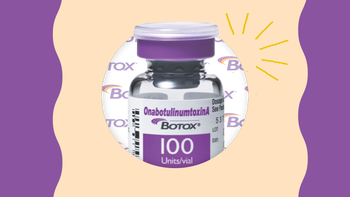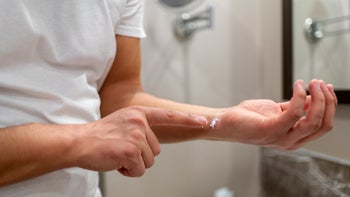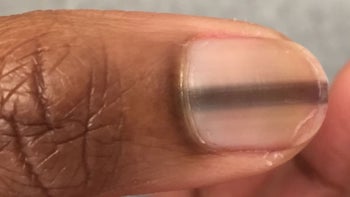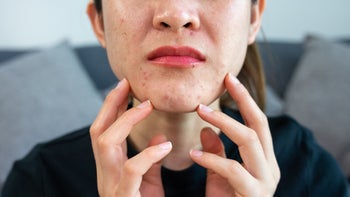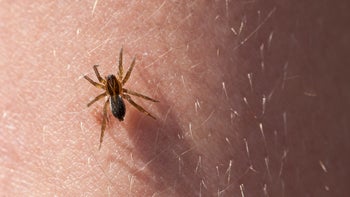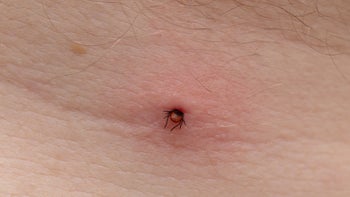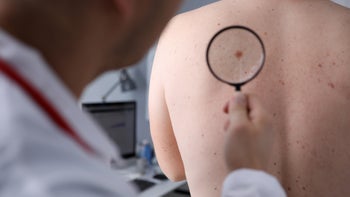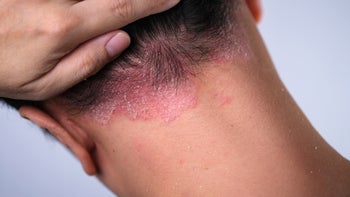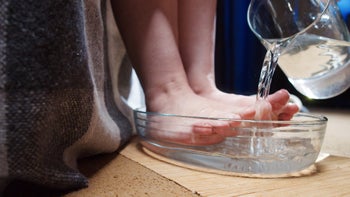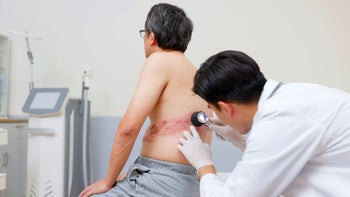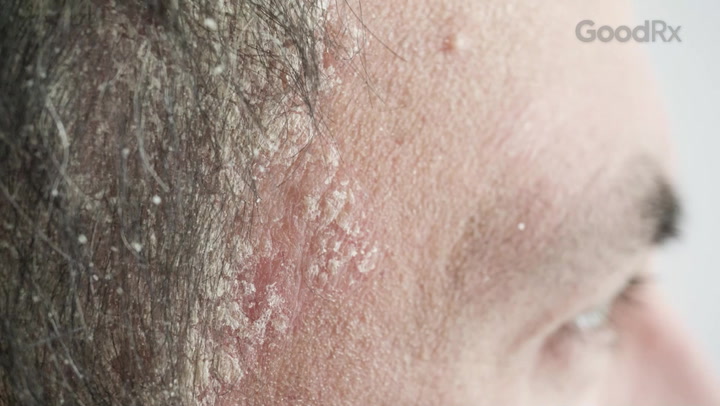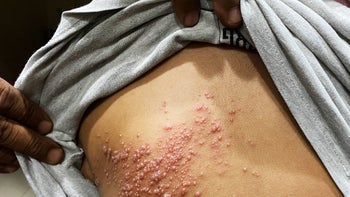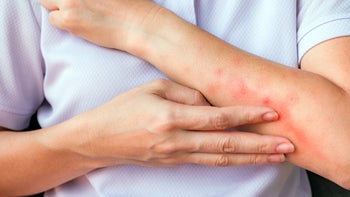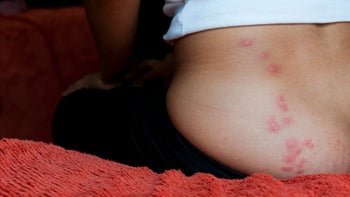
When Is a Burn Serious Enough for You to Go to the Hospital?
Key takeaways:
Most mild or first-degree burns can be managed at home. After cooling the area, you can wash and dress your burn.
Burns that cause widespread blistering (second degree) or that are charred or painless (third degree) should be seen immediately in an emergency room.
Any burns caused by chemicals, electricity, house fires, or lightning should be checked in the emergency room as well. These burns can have injuries that are not always immediately obvious.
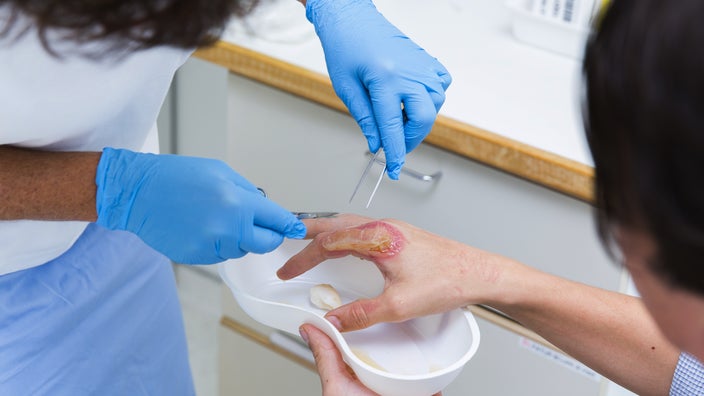
About half a million people in the U.S. each year have a severe burn that requires medical care. Many more people have minor burns that are managed at home. But how do you know the difference?
Several things determine the severity of a burn: how deep it goes, where it happens on the body, and how it happened. But it can be hard to tell how severe your burn is. So we’ll walk you through how to know when you need to go to the hospital or emergency room for a burn.
How do I know if my burn is serious?
Burn severity is mainly determined by how deep the burn goes. There are three main categories:
First degree: This the mildest type of burn. It’s considered “superficial” because it only affects the outer layer of skin, called the epidermis. These burns are painful and appear red. There are no blisters.
Second degree: These burns extend into the next layer of the skin, called the dermis. For this reason, they are known as “partial thickness burns.” They are also red and painful. But they differ from first-degree burns because they cause blisters.
Third degree: These are considered “full thickness burns” because they burn through the dermis. They can make the skin appear white or charred. However, these burns tend not to hurt as much. This is because the burn goes deep enough to damage the skin’s nerve endings.
Burn severity is also determined by how much of your skin is burned. In general, burns are considered more serious when a second- or third-degree burn affects more than 10% of the body’s surface area.
There are several ways you can estimate how much of your body is burned. But the easiest way is to use the palm of your hand. The size of your palm — including your fingers — is equal to about 1% of your skin surface. Only measure the part that is blistered, not the part that is just red.
The depth and size of the burn will help you determine if you need to go to the hospital, along with a few other factors.
When should I go to the hospital for a burn?
There are three main factors that determine if your burn is an emergency:
Severity, as we described above
The area of the body that is burned
The mechanism of the burn
Severity
You should go to the ER for a burn if:
Any part of your burn looks like a third-degree burn (white or charred) or if it does not hurt to touch it.
You have a second-degree burn that covers more than 10% of your body. Use the palm method above.
Body location
You should also go to the hospital for a second- or third-degree burn that covers your:
Face
Hands or feet
Genitalia
Joints
These areas may need special care to heal properly because the skin there is more sensitive or prone to scarring — like the face. These are also areas where the skin is under tension from movement — like the hands or joints.
Additionally, you should err on the side of caution and go to the hospital if you have a medical condition that puts you at greater risk for skin infection. This includes people with diabetes or with a weaker immune system.
Burn mechanism
It’s also important to consider how the burn happened. The following types of burns could be an emergency:
Chemical burns: Some chemicals can cause ongoing injury if not properly washed off. Chemical burns can also take more time to appear. So what seems like a small injury at first might become more serious.
Electrical burns: Any electrical burn (including a lightning strike) needs to be checked out as soon as possible. This is because electricity can cause burns inside your body that you can’t always see on the skin. Electrical burns can affect the way your heart beats, too.
Inhalation burns: If you are near a building or house fire and breathe in any amount of smoke, you should be checked. Sometimes the smoke and/or heat can cause injury in your airways. This can continue to worsen over time and cause life-threatening breathing difficulties.
What does the ER do for a burn?
Typical treatment for a burn in the ER includes:
Pain medication: Blistering burns can hurt a lot. The good news is that there are many types of pain medication that can help with this type of pain.
Fluids: More severe burns can lead to a large amount of fluid loss from the skin. ER providers are trained in how to estimate that fluid loss, which may need to be replaced through an IV.
Cleaning and dressing: Providers will properly clean your burns to help prevent infection. They will also likely apply ointment and a dressing to help the skin heal, and keep the area clean.
Your ER provider will evaluate whether you need to be referred to a burn center, or if you need to follow up with a specialized burn provider. This is only necessary in cases of severe burns or burns that cover a large percentage of the body.
What can I do at home?
You can take care of a first-degree burn at home. Here are things to do:
Immediately run the area under cool water. It is important to cool down the skin as soon as possible. This prevents the heat from causing further injury to deeper layers of tissue.
Wash the burned area with mild soap and water. Burned skin is at greater risk of infection.
Apply antibiotic ointment to the burn. This can help prevent infection and to help keep a bandage from sticking to the area.
Cover the burn. You can use gauze or a non-stick gauze pad.
Take pain medication if needed. It’s OK to acetaminophen or ibuprofen to help with your pain.
The bottom line
When you get scalded or burned, it may be hard to know what to do next. To figure out if the burn is serious, check the depth of the burn, the area of the body that is involved, and how it happened. If you are unsure, it's best to get yourself checked out. The ER can help with any pain, and clean and dress the wound. Your provider can teach you how to care for your burn at home, and arrange any ongoing care if needed.
References
American Burn Association. (2016). Burn incident and treatment in the United States: 2016.
Schaefer, T. J., et al. (2022). Burn evaluation and management. StatPearls.


